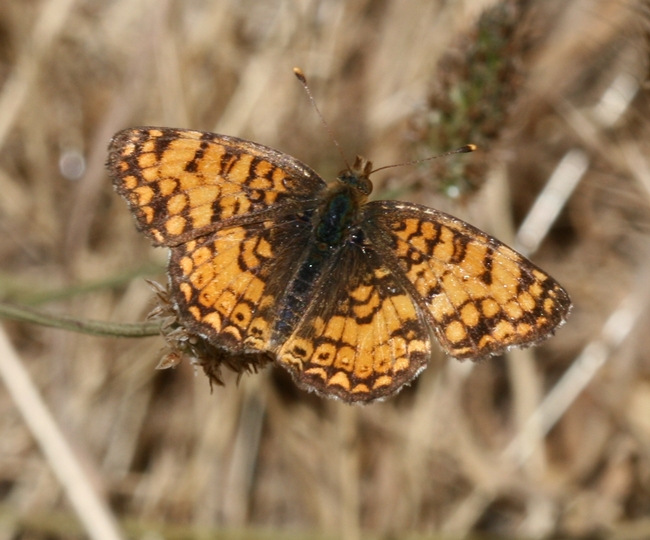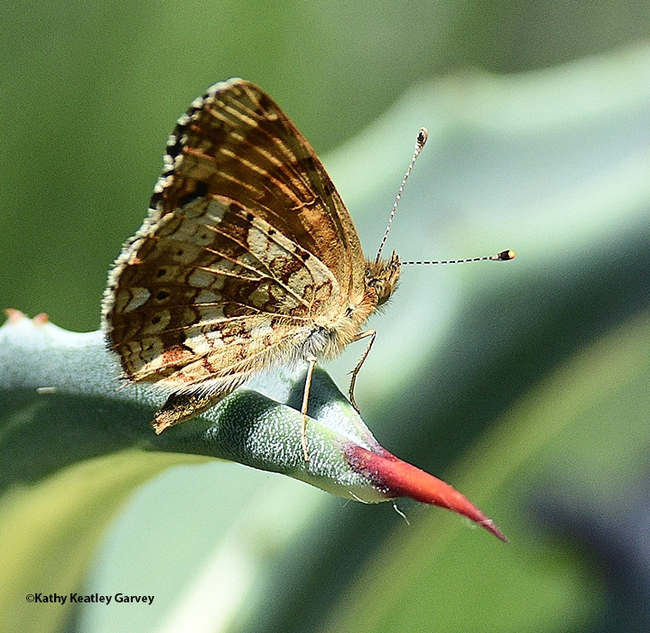
It's a butterfly that breeds on thistles, such as Cirsium, Carduus and Silybum.
The one that visited our yard June 17 wasn't visiting a thistle, however. It landed on a cactus.
It's an orange and black butterfly (orange wings with black markings). White fringes the edges.
UC Davis distinguished professor Art Shapiro, who has monitored butterfly populations in Central California since 1972 and maintains a website, Art's Butterfly World, says it's an abundant, weedy species on his transect."
The Mylitta Crescent is featured on his website banner.
"The Mylitta Crescent breeds on Thistles," Shapiro writes. "It originally used native species of Cirsium, probably mostly in wet habitats. With the naturalization of weedy European species of Cirsium, Carduus and Silybum, it is now found in all kinds of disturbed (including urban) habitats. Many of the weedy hosts dry up by early summer and it then must contract down to colonies of Bull Thistle, Cirsium vulgare, which persists all summer (or, on the East slope, Canada Thistle, C. arvense). The part-grown larvae overwinter and can be found sunning themselves on mild midwinter days. The upperside pattern of males varies greatly and is sometimes nearly obsolescent. The ventral hindwing is redder in cold seasons, especially in females, and the crescent marking is more strikingly silvered. Males patrol along roadsides and often sit at ground level. Both sexes visit many flowers, from Thistles to Yerba Santa to Heliotrope. Breeds continuously in warm weather: February-November near sea level, June-October in the high country, often one of the last species flying and visiting Rabbitbrush there."
This butterfly isn't as recognizable as the monarch icon, but it's still striking.
Attached Images:
